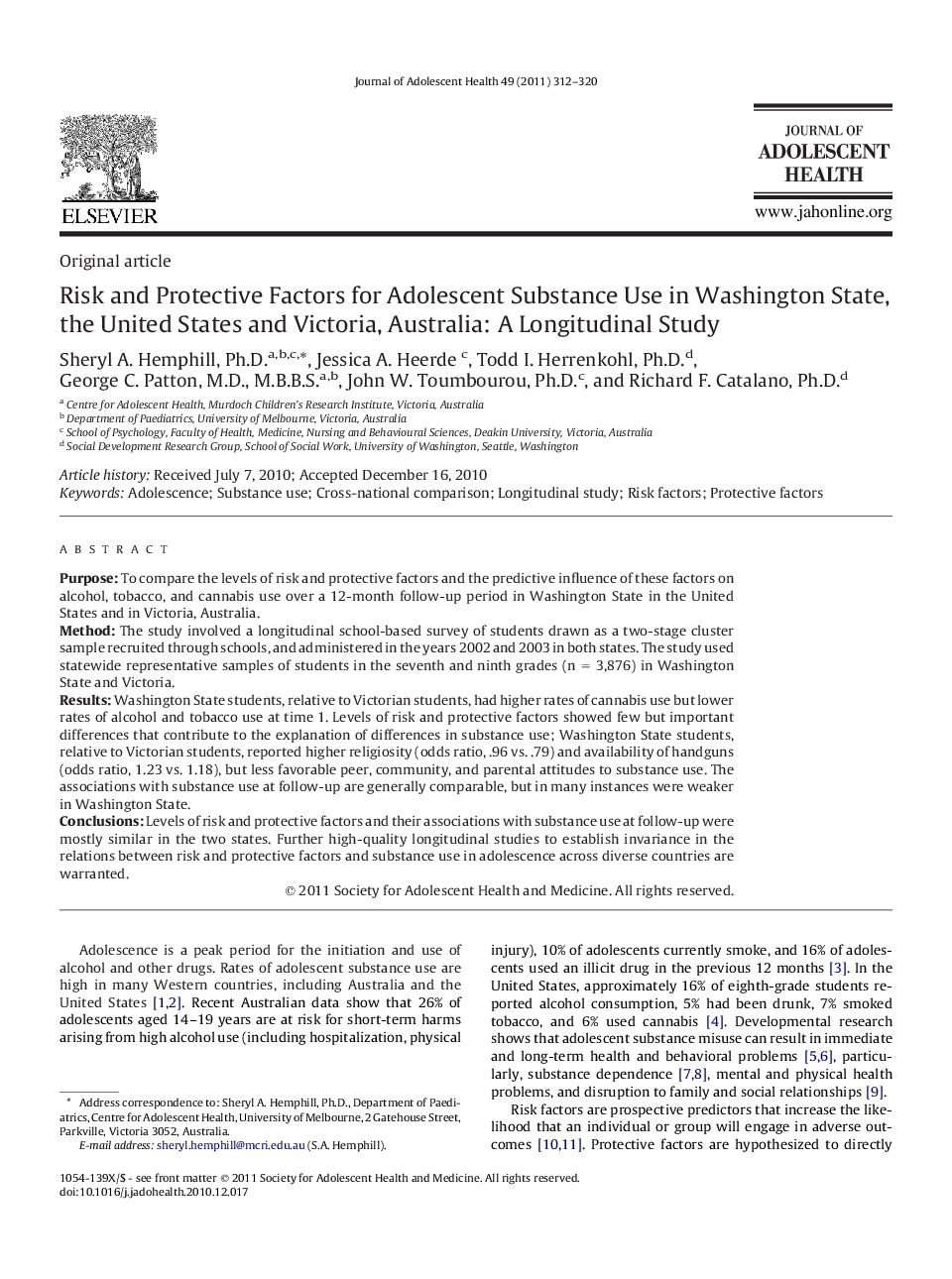| Article ID | Journal | Published Year | Pages | File Type |
|---|---|---|---|---|
| 1079162 | Journal of Adolescent Health | 2011 | 9 Pages |
PurposeTo compare the levels of risk and protective factors and the predictive influence of these factors on alcohol, tobacco, and cannabis use over a 12-month follow-up period in Washington State in the United States and in Victoria, Australia.MethodThe study involved a longitudinal school-based survey of students drawn as a two-stage cluster sample recruited through schools, and administered in the years 2002 and 2003 in both states. The study used statewide representative samples of students in the seventh and ninth grades (n = 3,876) in Washington State and Victoria.ResultsWashington State students, relative to Victorian students, had higher rates of cannabis use but lower rates of alcohol and tobacco use at time 1. Levels of risk and protective factors showed few but important differences that contribute to the explanation of differences in substance use; Washington State students, relative to Victorian students, reported higher religiosity (odds ratio, .96 vs. .79) and availability of handguns (odds ratio, 1.23 vs. 1.18), but less favorable peer, community, and parental attitudes to substance use. The associations with substance use at follow-up are generally comparable, but in many instances were weaker in Washington State.ConclusionsLevels of risk and protective factors and their associations with substance use at follow-up were mostly similar in the two states. Further high-quality longitudinal studies to establish invariance in the relations between risk and protective factors and substance use in adolescence across diverse countries are warranted.
